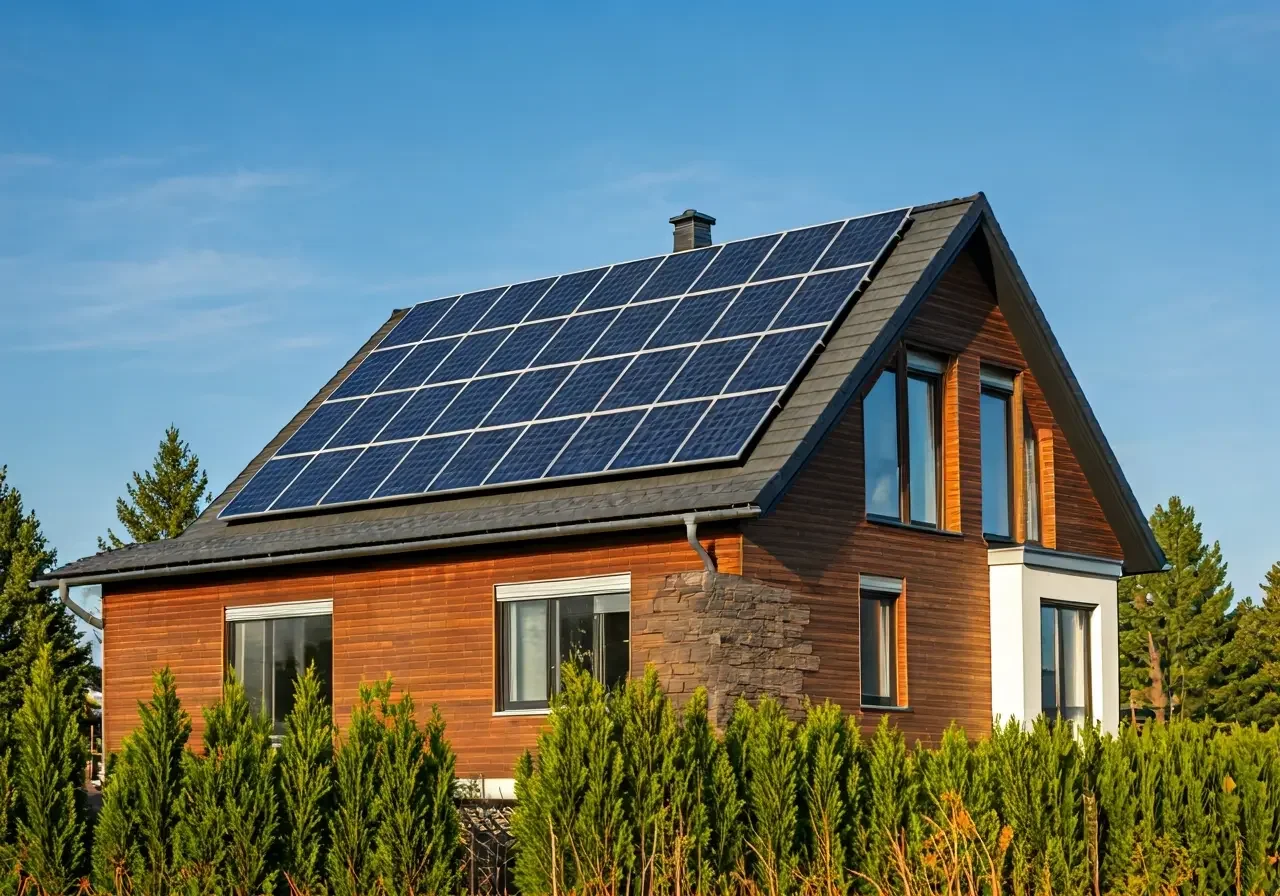7 Clean Energy Innovations Transforming the Residential Sector
In recent years, the push for clean energy has been revolutionizing the way we power our homes. From solar panels to smart appliances, innovative technologies have emerged, offering efficient and eco-friendly alternatives. In this blog, we'll explore some of the exciting innovations currently making waves in the residential sector.
1. Harnessing the Sun with Solar Roof Tiles
Solar roof tiles are an aesthetically pleasing alternative to traditional solar panels. They integrate seamlessly into a home's architecture, capturing sunlight to generate electricity without compromising on style.
The advent of solar roof tiles is taking green energy a step further by offering solutions that blend in with everyday home designs. Unlike the bulky and conspicuous traditional solar panels, these tiles are sleek and often indistinguishable from regular roof materials. Their design not only adds to the home's aesthetic appeal but additionally offers a robust energy solution through photovoltaic technology. This innovation has opened new doors to homeowners who were previously hesitant to adopt solar energy due to the traditional panels' look. It's a perfect marriage of form and function, making it a stylish way to harness solar power.
2. Energy Storage with Advanced Home Batteries
Advanced home batteries allow homeowners to store solar energy for use during cloudy days or at night, making it easier to rely on solar power exclusively and reduce dependence on the grid.
Energy storage is a critical component in the effective use of renewable energy sources. Through the development of cutting-edge batteries, it has become possible for households to store their excess solar energy effectively. This means that even when the sun is not shining, homeowners can still draw power without having to resort to traditional energy sources. The simplicity and efficiency of intelligent storage solutions like these contribute significantly to a homeowner's ability to maintain an uninterrupted green energy supply. Over time, this advancement is poised to further decrease reliance on nonrenewable energy forms and drive down electric bills.
3. Maximizing Efficiency with Smart Home Systems
Smart home systems optimize energy usage by automatically adjusting lighting, heating, and cooling based on occupancy and time of day, significantly reducing energy waste.
Imagine a home that responds intuitively to your daily schedule and climate shifts. Smart home systems make this a reality by learning and adapting to your habits and preferences. By making precise adjustments in energy use, such as dimming lights or adjusting thermostats, these systems excel at saving energy without compromising comfort. By automating several energy-intensive processes, smart systems help to significantly reduce a household's energy footprint. These systems are part of a progressive step towards smarter energy consumption and can perfectly align with other innovations such as smart water fixtures, helping in comprehensive sustainable living strategies.
4. Wind Energy for Urban Homes
Urban wind turbines are compact and designed to operate efficiently in smaller spaces, providing an additional renewable energy source for city dwellers.
In urban settings where typical wind turbines cannot be installed due to space constraints, the introduction of smaller, more compact urban wind turbines has been a game-changer. These turbines operate silently and efficiently, offering an alternative energy source in bustling city environments where solar might not always be effective due to shading and structural issues. Employing such systems can help diversify the energy sources available to urban residents, bolstering overall energy security and contributing to the collective clean energy grid. This is more crucial today than ever before, as cities aim to lower their carbon footprint.
5. Geothermal Heating and Cooling
Geothermal systems use the earth's natural temperature regulation to provide energy-efficient heating and cooling, offering a sustainable alternative to traditional HVAC systems.
Geothermal energy taps into the consistent temperatures just below the Earth's surface to provide an efficient and sustainable way to heat and cool homes. Unlike traditional systems which rely on electricity or fossil fuels, geothermal heating and cooling use renewable energy stored in the ground, thus lowering greenhouse gas emissions and offering long-term energy savings. Implementing these systems can be seen as an investment in the planet's health, while ensuring comfort in one’s home. As more homeowners become aware of these benefits, geothermal technology is slated to become an integral part of residential energy strategies.
6. Efficient LED Lighting
LED lighting consumes significantly less energy than traditional bulbs and has a longer lifespan, reducing both energy consumption and waste.
Switching to LED lights is one of the simplest ways homeowners can immediately enhance their home's energy efficiency. These lights use up to 80% less energy than conventional incandescent bulbs and last up to 25 times longer. This advancement means fewer replacements, thus reducing landfill waste. Beyond their longevity and efficiency, LEDs offer versatility in their design and come in a variety of colors and brightness levels to suit any space in a home. Together with smart home systems, LEDs provide a substantial upgrade to a home's overall energy footprint.
7. Water Conservation with Smart Fixtures
Smart water fixtures allow for precise control of water usage, reducing waste and promoting sustainability in daily water consumption.
With population growth and climate change, water conservation is more crucial than ever. Smart water fixtures are designed with efficiency in mind, providing homeowners with precise control over water flow and temperature. Many of these systems come equipped with user-friendly interfaces and apps that provide feedback on water usage patterns and tips for further conservation. Embracing this technology represents a logical step forward in adopting a green lifestyle and plays a vital role in maintaining sustainable water resources for future generations.


